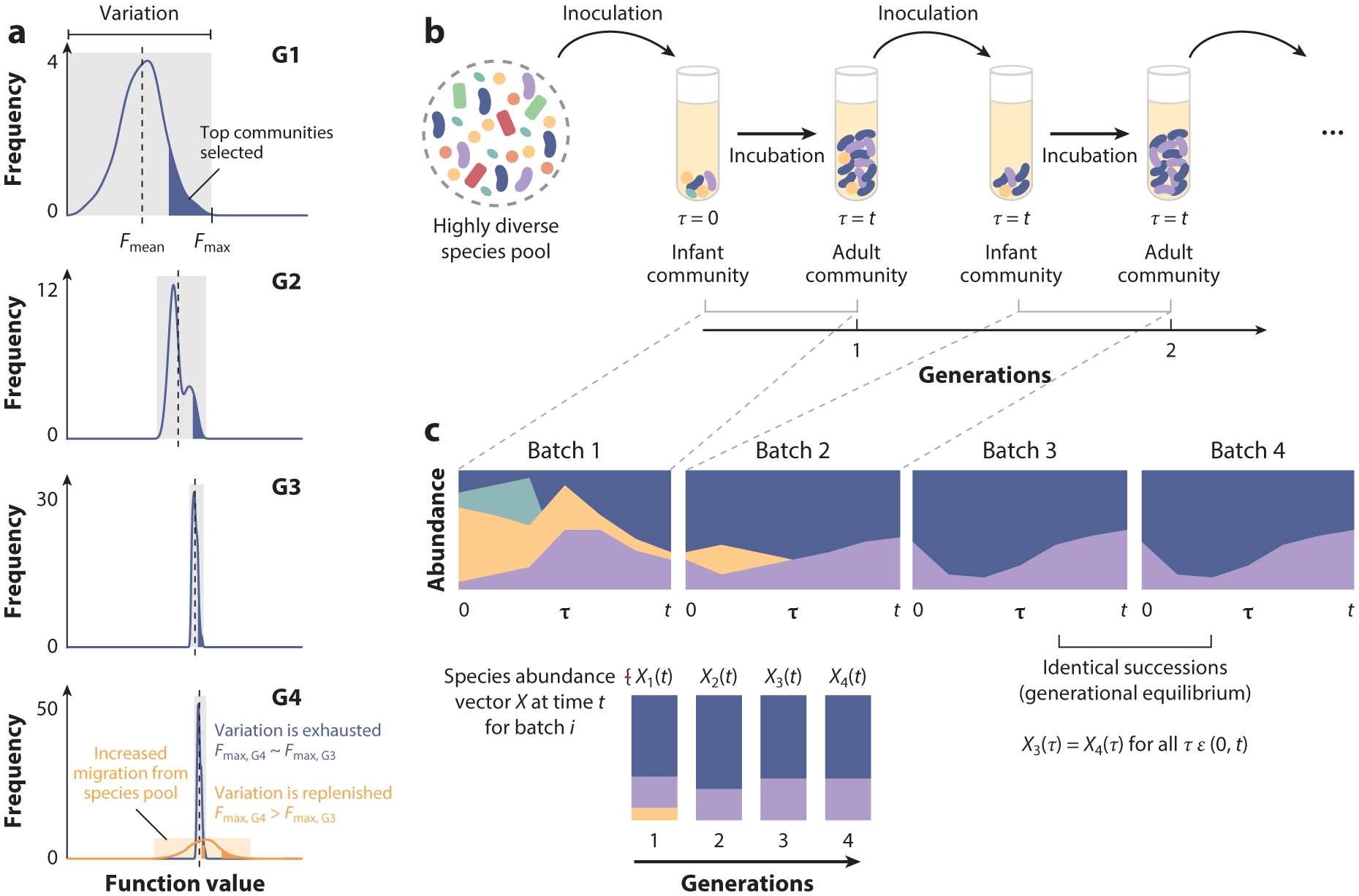Figure 2.

Limitations of artificial selection at the level of communities. (a) Schematic illustrating the conflict between heritable variation and selection. As the top-performing communities get selected, the worst-performing communities get purged from the metacommunity, and as a result, Fmean increases, and the amount of heritable variation decreases over generations (G). After multiple rounds of selection, and without any novel variants being introduced, the heritable variation is exhausted, and selection has nothing upon which to act. Variation can be replenished by, for instance, introducing migrants from a species pool, which may allow communities to reach new function peaks (Fmax). (b) Microbial community growth in serial batch culture (without selection). Communities are initially seeded from a highly diverse species pool into a new habitat (infant community) and then allowed to grow for an incubation time t (at which point they are an adult community). Without selection, a small and random fraction of the cells from the adult community are inoculated into a new habitat, forming a new infant. This growth and dilution process is repeated multiple times. (c) Within each batch incubation, the species undergo an ecological succession as they grow and interact with each other. After multiple rounds of serial passage, communities reach a generationally stable equilibrium, which is seen when the species abundance vectors X during (and at the end of) the ith and all subsequent incubation periods are identical, i.e., when Xi(τ) = Xi+j(τ) for all τ ε (0,t) and j ≥ 1. Without such generational stability, community heritability is very low, and the success of ecosystem-level selection at the level of communities is strongly reduced.
